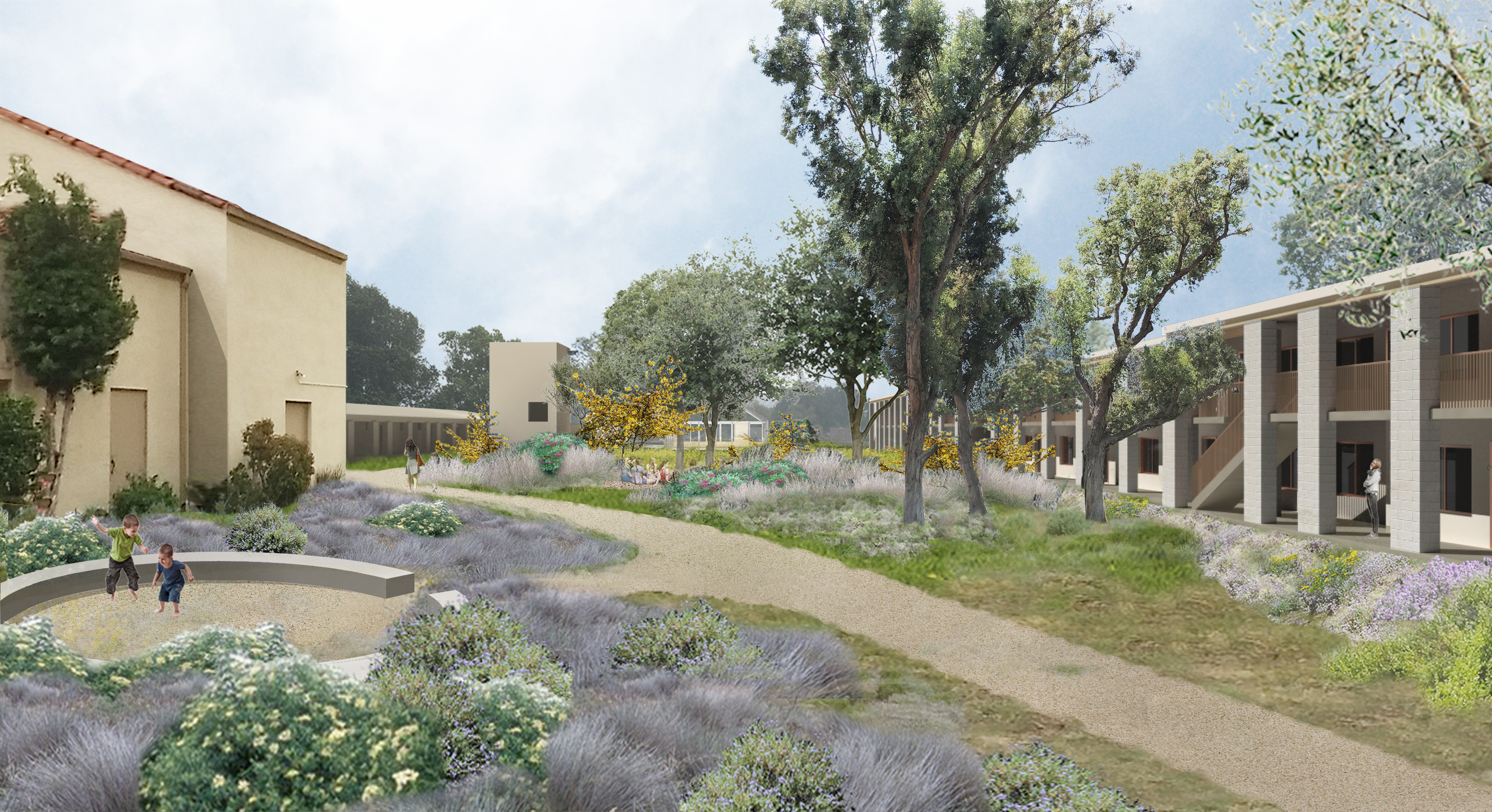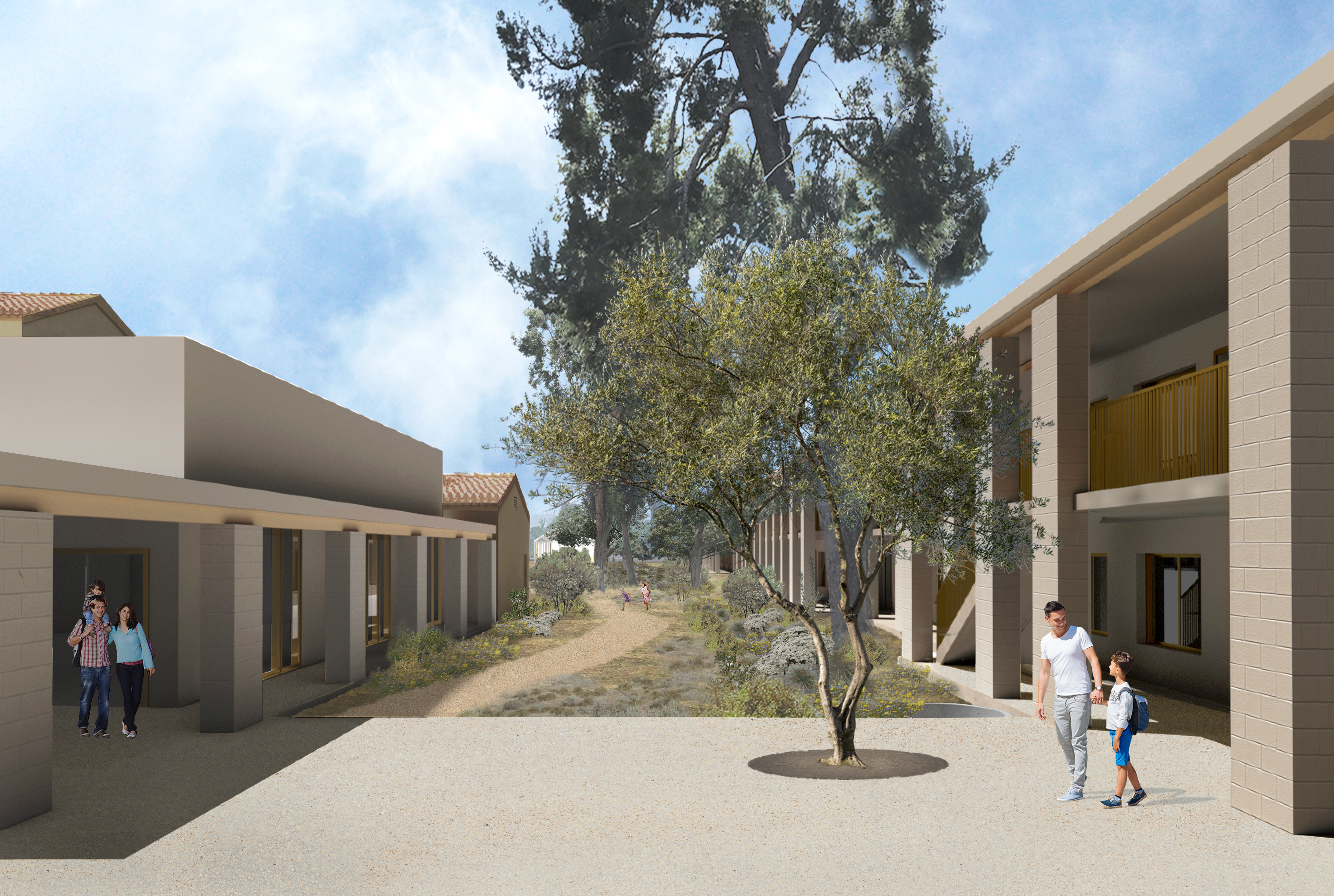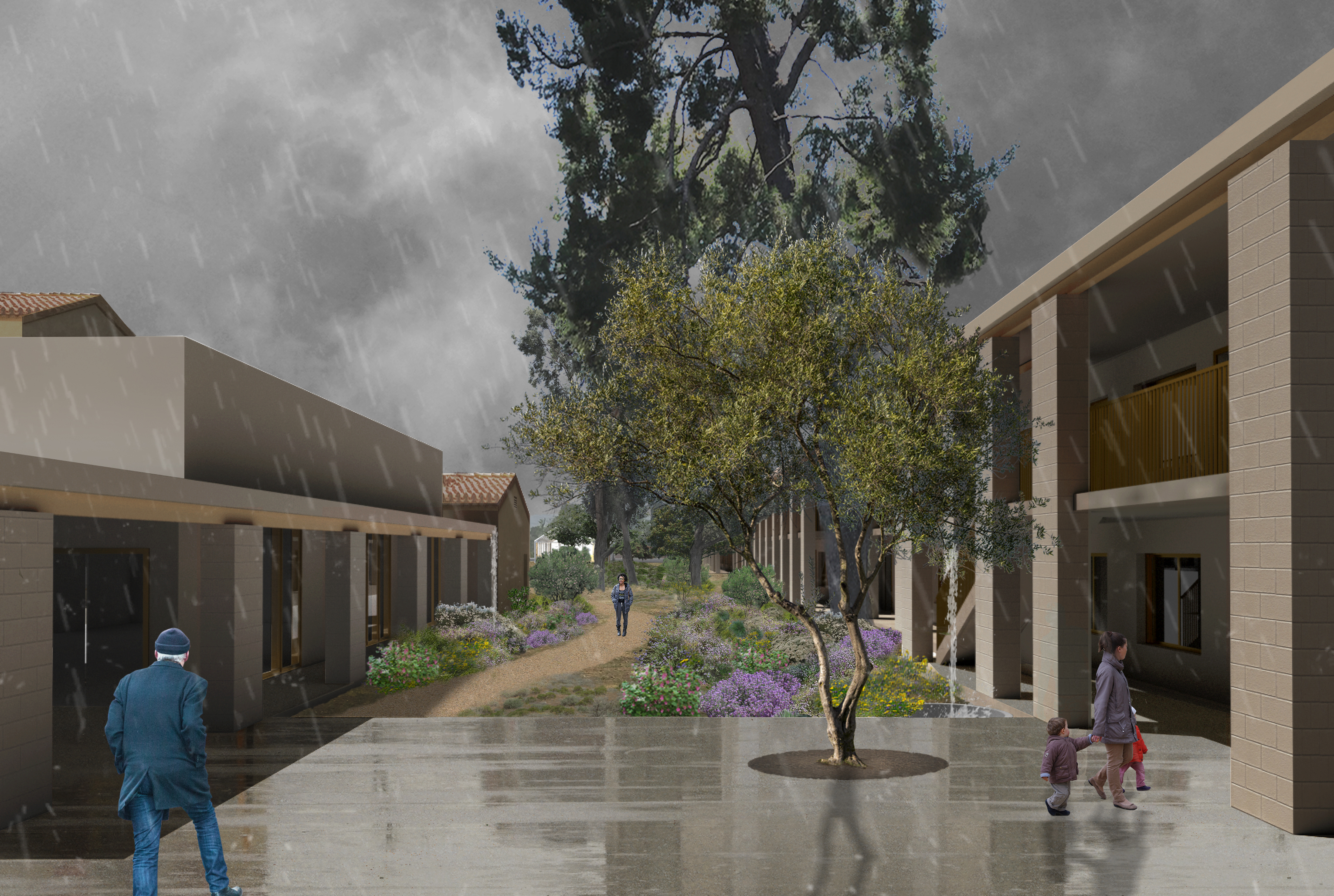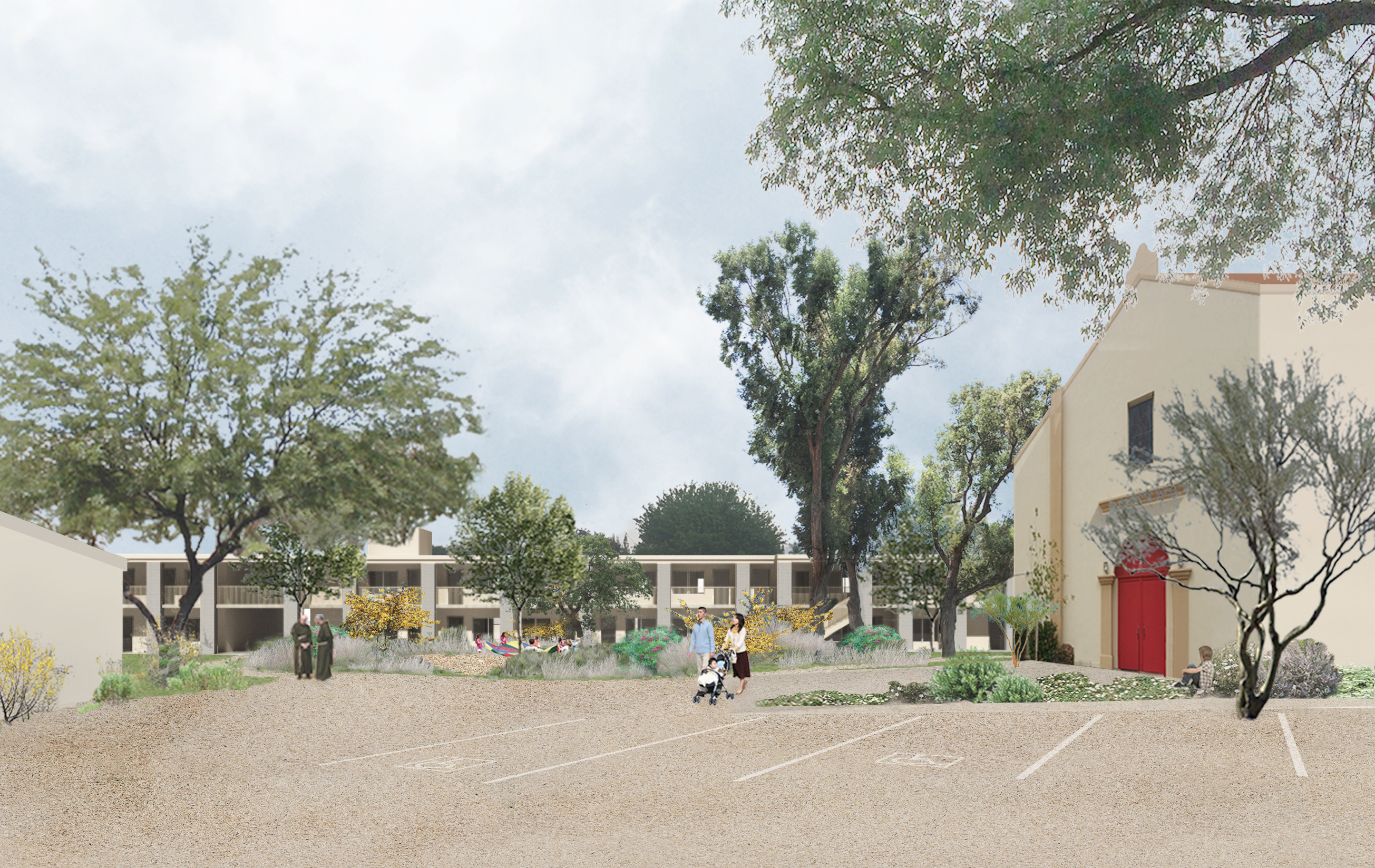St. Michael’s Housing
Riverside, California2015-Present

Conceived as a prototypical project for reinvigorating underused church properties, St. Michael’s Riverside recreates the meaning of church, ecclesia, a collective congregation, in gathering together people of various spiritual traditions within a model sustainable urban garden to which will be added a new affordable housing community in two new 2-story buildings containing 50 affordable housing units and offices for supportive services. As in historic California missions, colonnades form the circulation for the housing and friary buildings, while providing passive cooling from its shaded verandah. The project will be an exemplary sustainable living model.
Within this community will be an urban farming program consisting of aquaponics in the greenhouse, a citrus garden, a “food forest” (an ecosystem of compatible fruit and vegetable bearing planting groups), Native American traditional plants and a bio-swale, marking the changing of seasons. The large yard between the housing and the parish hall (the Meadow) will be the main agricultural area, with raised vegetable beds, Native American “Three Sisters” planting (corn, beans, and squash), and a field for seasonal rotational planting of seasonal crops. A children’s play area, with its own seasonal planting bed (sunflowers, sweet peas, etc.) is placed in its midst. Biblical plants symbolic of Christian sacraments (wheat, grapes and olives) will be included. Seeds of Hope, a food justice ministry of the Episcopal Diocese of Los Angeles, will supervise the urban farming program on the campus. The large garden will be a tapestry, weaving together the various users of the campus around a central gathering circle. A bio-swale running along the dwelling units will mark the changing of the seasons with fresh green leaves and flowering plants in Spring giving way to drought-tolerant plants (sage, buckwheat, flannel bush and grasses) surviving the warm weather months. While the cultivated portions of monastic gardens always included useful plants.
In addition to traditional church worship, the new project will provide space for Native American spirituality outdoors. Riverside, San Bernardino, and San Diego counties are home to 19 federally recognized Indian tribes. Various bands of the Cahuilla, Luiseno, and Chemehuevi tribes live near the city of Riverside, including the Morongo, Rincon, Soboba, and San Manuel people. Further the historic Sherman Indian High School is three blocks away. Embracing their traditions, a gathering circle at the center of the site will be a place to celebrate nature, the earth and the sky. Surrounding the circle and woven into the planting of the site are Native American traditional plants of spiritual, cultural, and medicinal significance, such as Sage, Oak, Mesquite, Elderberry, and Toyon. The garden will have intimate areas for walking meditation, reflection, and a Native American Women’s Talking Circle.
.
Within this community will be an urban farming program consisting of aquaponics in the greenhouse, a citrus garden, a “food forest” (an ecosystem of compatible fruit and vegetable bearing planting groups), Native American traditional plants and a bio-swale, marking the changing of seasons. The large yard between the housing and the parish hall (the Meadow) will be the main agricultural area, with raised vegetable beds, Native American “Three Sisters” planting (corn, beans, and squash), and a field for seasonal rotational planting of seasonal crops. A children’s play area, with its own seasonal planting bed (sunflowers, sweet peas, etc.) is placed in its midst. Biblical plants symbolic of Christian sacraments (wheat, grapes and olives) will be included. Seeds of Hope, a food justice ministry of the Episcopal Diocese of Los Angeles, will supervise the urban farming program on the campus. The large garden will be a tapestry, weaving together the various users of the campus around a central gathering circle. A bio-swale running along the dwelling units will mark the changing of the seasons with fresh green leaves and flowering plants in Spring giving way to drought-tolerant plants (sage, buckwheat, flannel bush and grasses) surviving the warm weather months. While the cultivated portions of monastic gardens always included useful plants.
In addition to traditional church worship, the new project will provide space for Native American spirituality outdoors. Riverside, San Bernardino, and San Diego counties are home to 19 federally recognized Indian tribes. Various bands of the Cahuilla, Luiseno, and Chemehuevi tribes live near the city of Riverside, including the Morongo, Rincon, Soboba, and San Manuel people. Further the historic Sherman Indian High School is three blocks away. Embracing their traditions, a gathering circle at the center of the site will be a place to celebrate nature, the earth and the sky. Surrounding the circle and woven into the planting of the site are Native American traditional plants of spiritual, cultural, and medicinal significance, such as Sage, Oak, Mesquite, Elderberry, and Toyon. The garden will have intimate areas for walking meditation, reflection, and a Native American Women’s Talking Circle.
.


